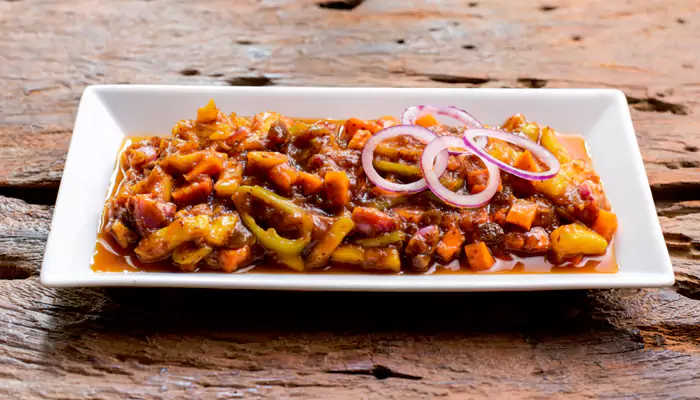Flavour Explosion: Sri Lanka’s Top Street Snacks You Can’t Miss
Sri Lanka, a tropical paradise known for its lush landscapes and rich cultural heritage, also boasts a vibrant street food scene that is a culinary adventure in itself.
- Ishani Karmakar
- 14 March, 2025
- 2 mins ago

Flavour Explosion: Sri Lanka’s Top Street Snacks You Can’t Miss
Sri Lanka, a tropical paradise known for its lush landscapes and rich cultural heritage, also boasts a vibrant street food scene that is a culinary adventure in itself.
The island's street snacks are a testament to its diverse influences, blending flavours from Indian, Dutch, Malay, and Portuguese cuisines to create something uniquely Sri Lankan. Whether you're wandering through the bustling streets of Colombo or exploring the quieter towns, these mouthwatering street snacks are sure to captivate your taste buds.
Samosas
Samosas are a common street snack across South Asia, but the Sri Lankan version has its own distinct flair. Shaped like a triangle, these pastries are filled with a mixture of potatoes, peas, and various other fillings, all wrapped in a thin, crispy pastry shell. The Sri Lankan samosa is often spicier than its counterparts in other countries, thanks to the liberal use of chili and spices like cumin and coriander. They are deep-fried to golden perfection and are best enjoyed hot, straight from the fryer. Samosas are a popular snack to grab on the go, offering a quick and tasty bite that packs a punch of flavour.
Vadai
Vadai, also known as "vada" or "vadai," is a popular street snack in Sri Lanka that is both crispy and savoury. These deep-fried fritters are made from a batter of ground lentils, spices, and herbs, and they come in various shapes and sizes. The most common types are "ulundu vadai," which are doughnut-shaped and made from urad dal, and "parippu vadai," which are flat and made from split chickpeas. Vadai are often served with a side of coconut chutney or a tangy tamarind sauce, making them an irresistible snack that’s crunchy on the outside and soft on the inside.
Kimbula Banis
For those with a sweet tooth, Kimbula Banis is a delightful treat you shouldn’t miss. Named after its shape, which resembles a crocodile (kimbula in Sinhala), this sweet bun is made from a soft dough that’s twisted and sprinkled with sugar. The outside is slightly crunchy, while the inside is fluffy and sweet. Kimbula Banis is often enjoyed with a cup of tea, making it a perfect snack for a relaxing afternoon break. It’s a simple yet satisfying pastry that showcases the sweeter side of Sri Lankan street food.
Achcharu
Achcharu is a popular street snack that offers a burst of tangy, spicy, and sweet flavours all at once. This snack is essentially a Sri Lankan-style fruit pickle, made from fresh fruits like mangoes, pineapples, or ambarella (a tropical fruit), which are mixed with chili, salt, sugar, and sometimes vinegar. The result is a mouth-puckeringly delicious treat that’s both refreshing and addictive. Achcharu is typically sold in small paper cones or plastic bags by street vendors, and it’s the perfect snack to cool off with on a hot day while exploring the streets of Sri Lanka.

Pol Roti
Pol Roti is a traditional Sri Lankan flatbread made with freshly grated coconut, flour, and water. This street snack is simple yet incredibly flavourful, with the coconut adding a rich, nutty taste and a slightly chewy texture. Pol Roti is often served with a side of "lunu miris," a spicy sambal made from chili, onions, and lime juice. It’s a filling and wholesome snack that’s perfect for breakfast or a light meal on the go. The rustic, homemade quality of Pol Roti makes it a favourite among locals and a must-try for visitors.
Sri Lanka’s street snacks are more than just food; they are a reflection of the country’s rich cultural tapestry and its people’s love for bold, vibrant flavours. So, the next time you find yourself wandering the streets of Sri Lanka, make sure to indulge in these delightful treats. Your taste buds will thank you for the adventure, and you’ll walk away with a deeper appreciation for the island’s diverse and delicious street food culture.










